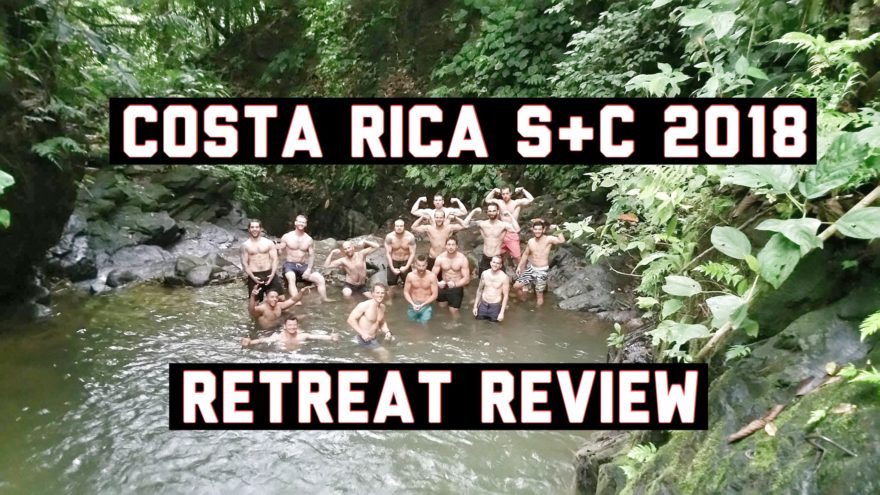I recently had the opportunity to attend a strength and conditioning retreat hosted by none other than the legendary Ben House at his Flo Retreat Center.
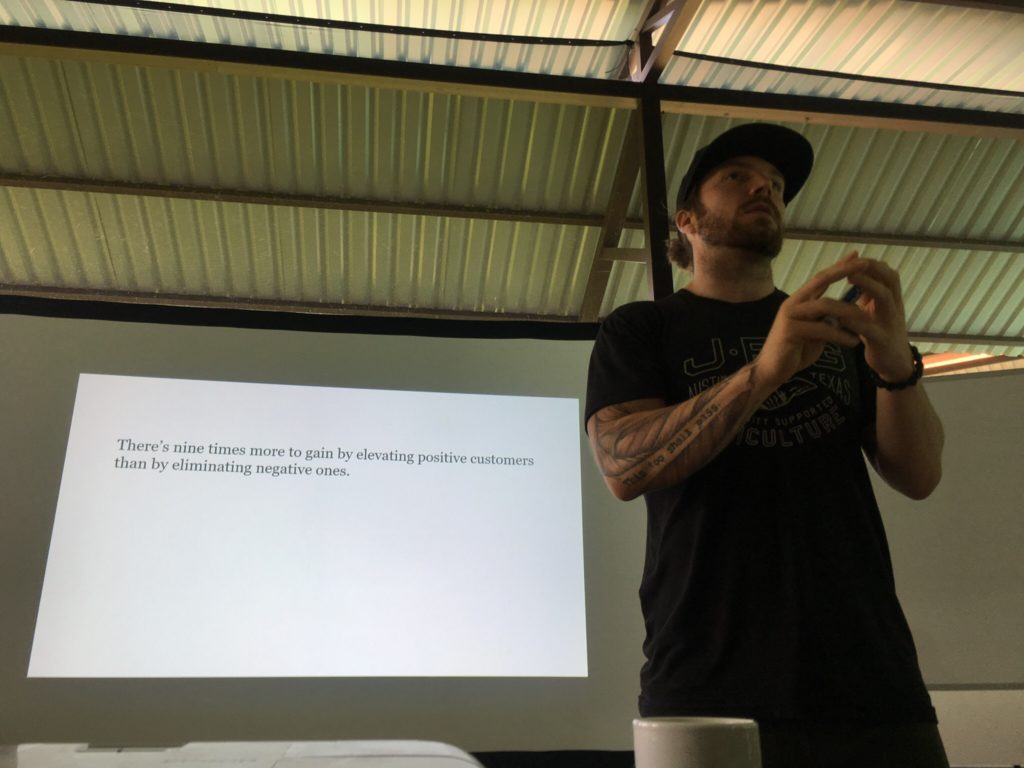
The retreat consisted of a morning filled with meditating, writing, thinking, and of course learning. Afternoons were time to bro down with fellow bros at the beach, on hikes, and exploring all the wonders that Costa Rica has to offer.
The experience was life changing for me. Very rarely do I get a chance to be a part of a community like we had in Costa Rica, especially as a mercenary PT. I had the opportunity to learn from great people, share phenomenal moments, and make new friendships that I hope last a lifetime.

If you want to get schmarter, meet amazing people, or simply get away from the riggers of a overconnected environment, I strongly encourage you to sign up for one of these retreats. I’m hoping to be there again next year.
Without further adieu, if you want some knowledge bombs from the heavy hitters who were there, check out the review below.
Table of Contents
Evolution and training with Pat Davidson
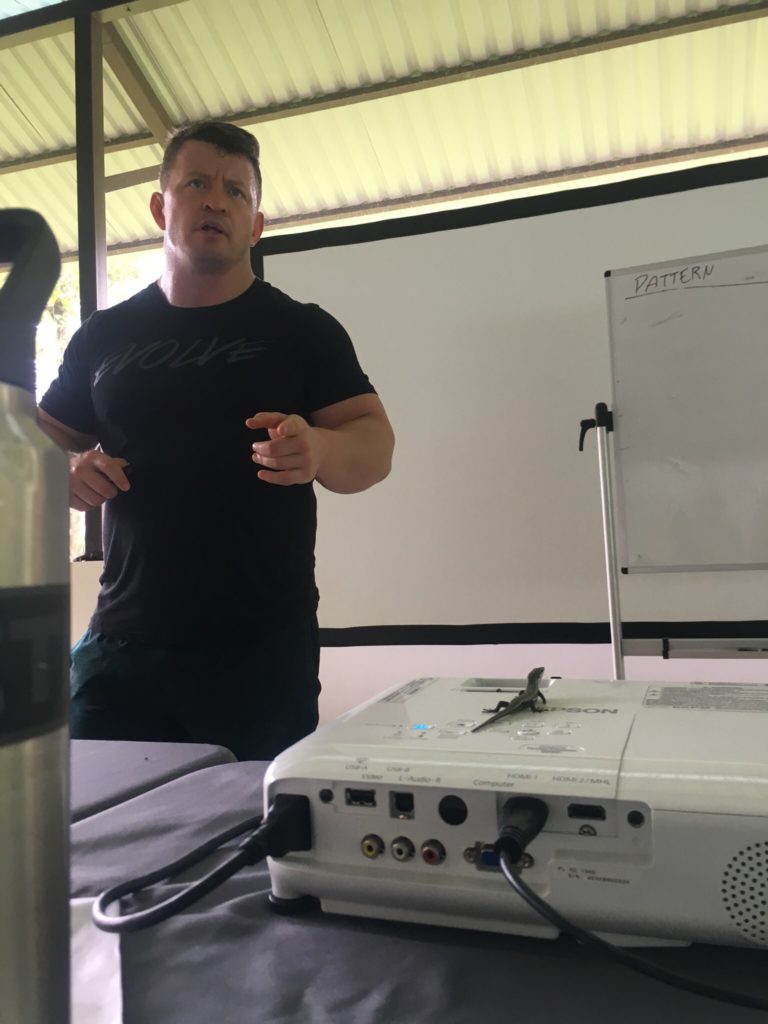
Much of Pat’s talk reviewed concepts from other times I have seen him speak (here and here), but he continues to refine his thought process.
A brilliant evolution analogy: Evolution is like an old man with a bunch of junk in front of his house. Never does he get rid of the junk, he just continues to add to it.
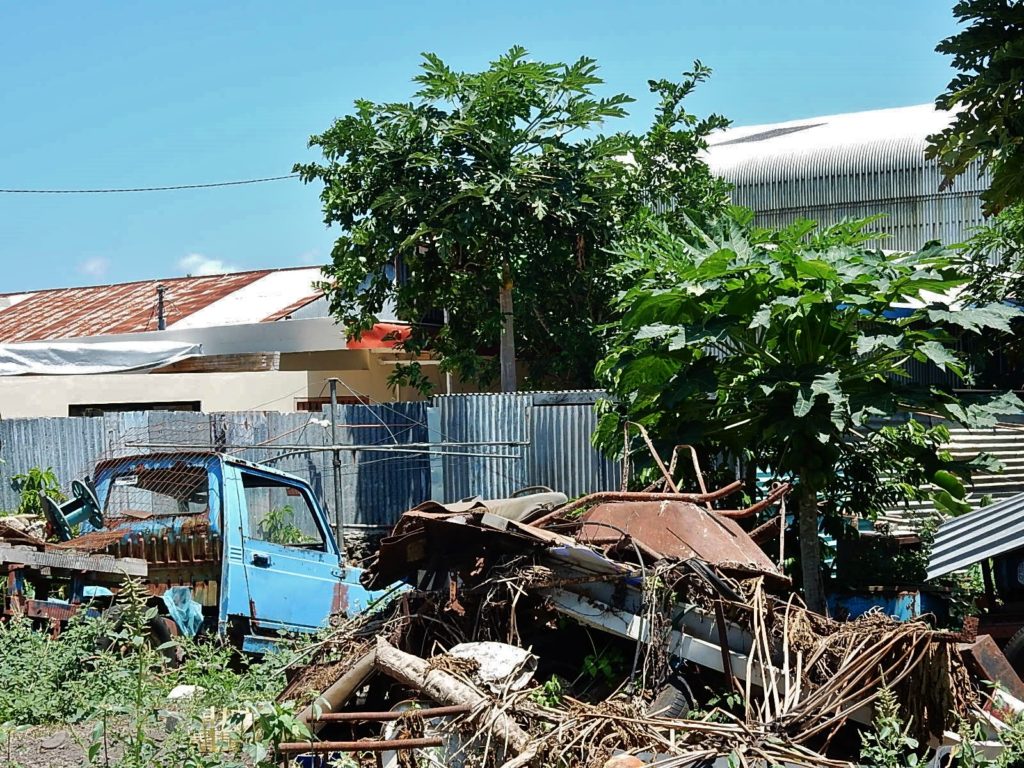
Evolution works under a similar mechanism. Never are earlier versions thrown out. Instead, more complex adaptations are added to these earlier versions.
Training involves developing movement archetypes. That is, striving towards the typical example of a given activity. For example, there are certain qualities that a squat possesses. Training allows us to express the archetype of a movement such as this.
Once the archetype is developed, the movement memory can be drawn upon and applied to different contexts. For example, if you can goblet squat with good technique, you most likely figure out the zercher squat.
Once we’ve gained that movement memory, different constraints can be used to drive adaptation. This could involve changing the variation or altering movement quantity (load, velocity, duration).
These archetypes can be extrapolated into planar movements. Each movement plane contains certain sensory or motor qualities. Sensory involving what should be felt, motor involving what position the body ought to be in.
Here are the planar archetypes
Sagittal
Sensory
- Hamstring
- Abdominals
- Heels
Motor
- Skull stays over pelvic floor
- Ribcage is retracted
Frontal
Sensory
- Foot arches
- Adductors and glutes
Motor
- Center of mass ought to lateralize to one side (pelvis should be able to see-saw)
- Foot pronation and supination
- Body ascends and descends within lateralization
Transverse
Sensory
- Ribs
- Cranial senses (teeth, visual, etc)
- Rotational muscles
Motor
- Axial skeleton dissociates (should sense rotation)
- Appendicular asymmetry
Table Tests
Table testing merely assesses potential. Does this individual have access to all three planes? As we age, we often lose this quality because of the greater stressors our bodies can tolerate.
Children, on the other hand, should be able to pass the table tests. They use lots of volume under low loads and velocities to learn how to move. It is this state that is also the crux of rehabilitation.
A great exercise variation
I really loved the minor tweak that destroyed my abs on pushups, and that is simply placing your feet in contact with a wall. This variation allows for greater leg and abdominal tension within the pushup. Talk about game changer.
To learn more about Pat Davidson, check him out here.
Somatic Recovery with Seth Oberst

Seth gave an amazing talk on how movement can impact trauma, a new area I am unfamiliar with. Let’s dive in.
What is stress?
Stress is somewhat of a nebulous term. It means different things for different people.
A couple of proposed definitions include:
- A resource-intensive response to internal and external challenges
- Perceived destabilization
While stress is hard to define, a lack of safety is often prevalent in stressful scenarios.
Feeling safe requires four things:
- Reliable access to soothing caregivers
- A rich sensorimotor environment
- A felt sense of safety
- Social group that provides feedback on contextual cues
How many of us lack in these areas? Can we see how not possessing these qualities could increase perceived threat? If an individual is missing one of these qualities, the stress response is an appropriate action ought. There is no inaccuracy in the brain’s ability to perceive safety and danger.
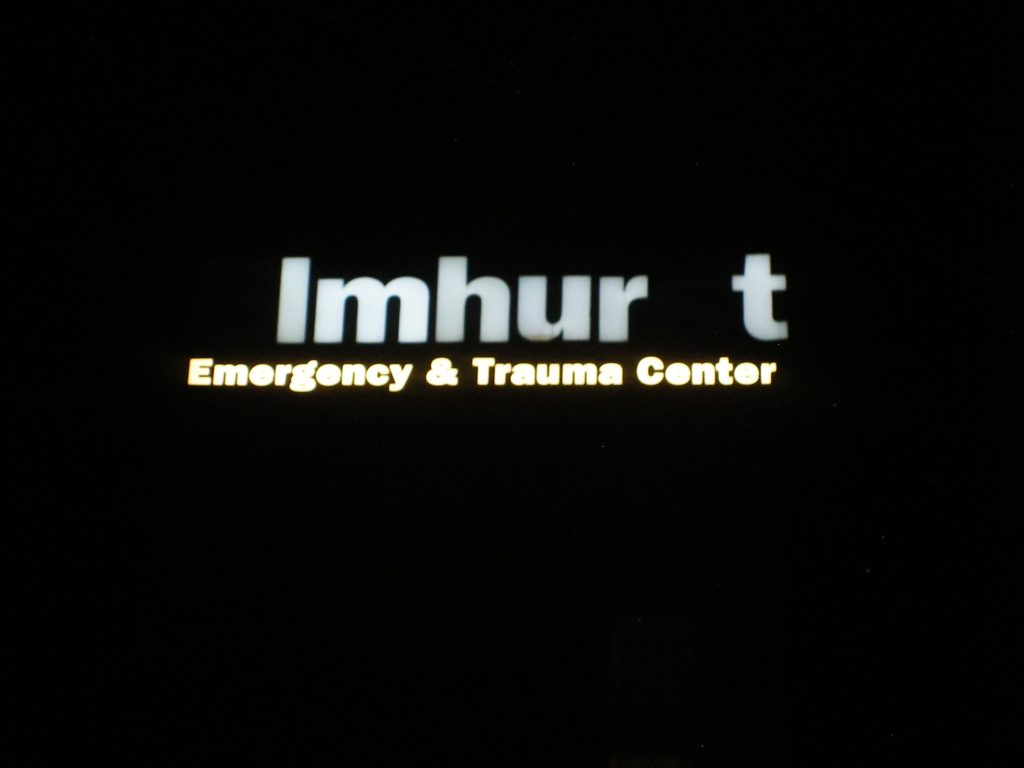
There is no area where people feel unsafe more than trauma. Trauma occurs when immobility and fear combine.
With movement being a component of perceived safety, we can how movement can help individuals with trauma. Movement can help eliminate fear.
Neuroception
Neuroception is how our bodies perceive danger and safety. Neuroception is low when we feel safe, and high when we do not. In fact, there are three behaviors associated with neuroception:
- Low – prosocial behavior
- High – perseverate; fight or flight
- Life-threatening – shut down/freeze/disassociation
One can stay in any of these states for prolonged periods of time, whether high (think someone who is easily stressed or high alert) or even life-threatening (resources exhausted, most of our toughest patients and clients).
Because a rich sensorimotor environment can enhance safety, movement can be utilized to re-embody one’s trauma, lower one’s neuroceptive state.
Healing trauma through somatic experiencing
“You didn’t talk your way into this, you can’t talk your way out of this” – Seth Oberst
Much of the trauma people experience occurs in childhood. Children are highly malleable, thus early trauma can have a lifelong impact.
If you want an idea of how traumatic your childhood was, you can check out the Adverse Childhood Experience (ACE) questionnaire. It’s 10 questions that determine traumatic extent. If you score 6 or more, there is some correlations to a decreased lifespan of up to 20 years! This trauma stuff matters.
Somatic experiencing can be a way to help treat the ill effects of trauma. Instead of distancing yourself from feelings (hint hint cognitive behavioral therapy), you treat trauma through three methods:
- Supporting safety through touch
- Somatic storytelling
- Embodied safety through movement
Through these methods, safety can be regained, threat attenuated, and life restored.
If you are interested in utilizing this type of therapeutic approach, Seth recommends 5 different methods that may be helpful:
- Somatic experiencing
- Sensorimotor psychotherapy
- Hakomi
- Craniosacral
- Feldenkrais
To learn more from Seth Oberst, check him out here.
Also, Seth is putting on some great con ed courses this year. You can sign up here (note: I’ll be attending his Orlando seminar).
Basketball Conditioning with Chris Chase
Chris gave an excellent program on what conditioning means for his NBA players.
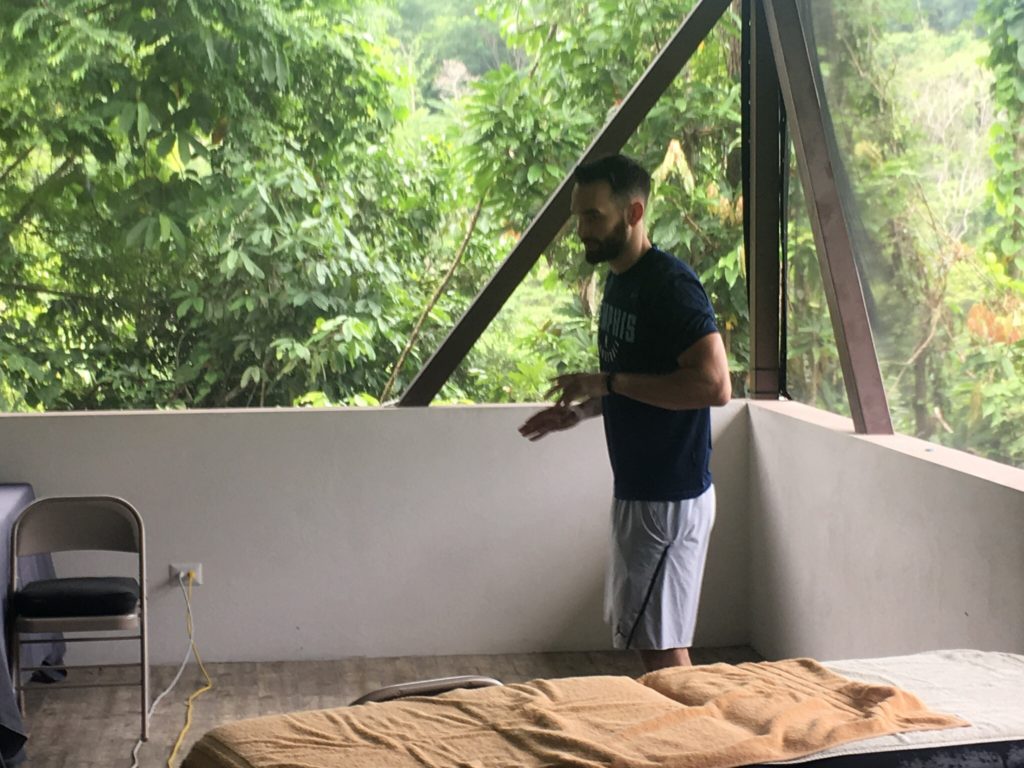
Conditioning aims to buffer load spikes, meaning one is physically prepared to perform well at the highest workload possible.
There are three conditioning targets that the NBA strength coach can focus on improving:
- Cardiac
- Respiratory
- Peripheral
NBA players have developed the cardiac piece from years and years of basketball, but often lack the peripheral and respiratory components.
Peripheral conditioning
The peripheral conditioning section focused on building movement progressions that NBA players are not so good at. Here were some of my favorites:
Squats
Squatting involves changing levels to load tissues. Most of Chris’ progressions were static and wall-oriented to start, moving towards oscillatory variations once positioning was mastered.
My favorite was the foam roller squat on the wall. I’ve been using this a lot with my clients and love it:
From here, a client can move towards a squat supported in a power rack, TRX squats (with a fingertip hold), and then unsupported variations.
Speed and Agility
A staggered stance is used to teach acceleration. This position is really a squat progression, with the difference being the body weight is shifted onto the forefoot.

The other new piece for me was the hockey stop, in which you act as though you are going to shuffle in the opposite direction you are traveling in, but stop in the process.
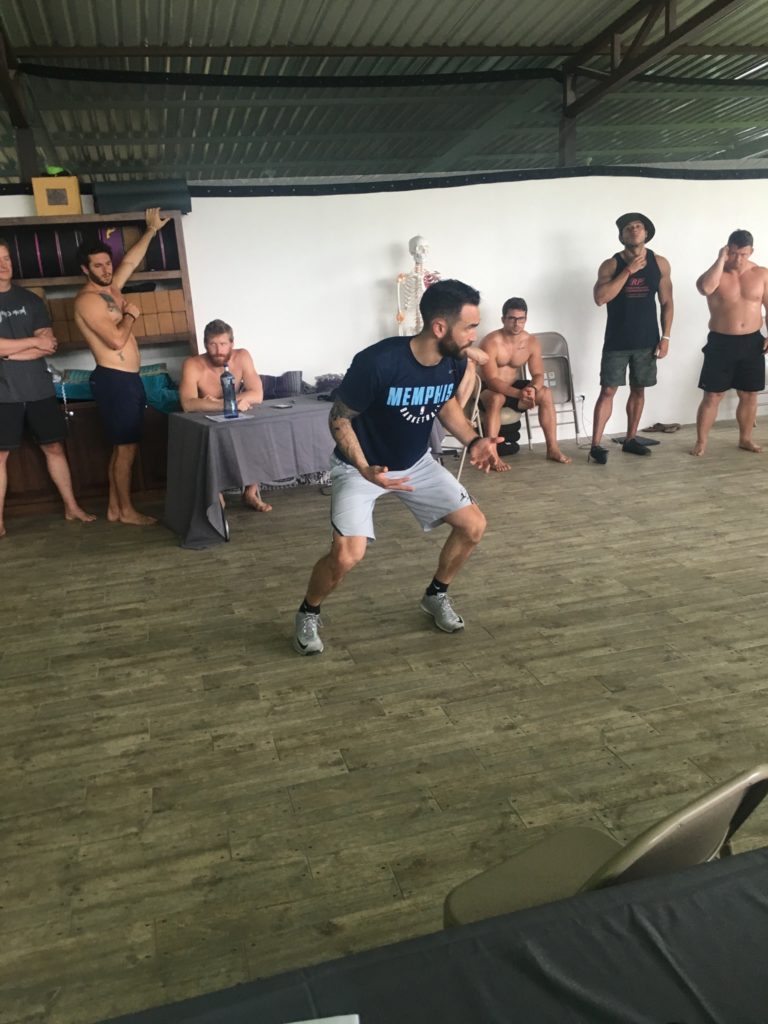
If you want to learn more from Chris, check him out here.
Performance Medicine with Eric Oetter
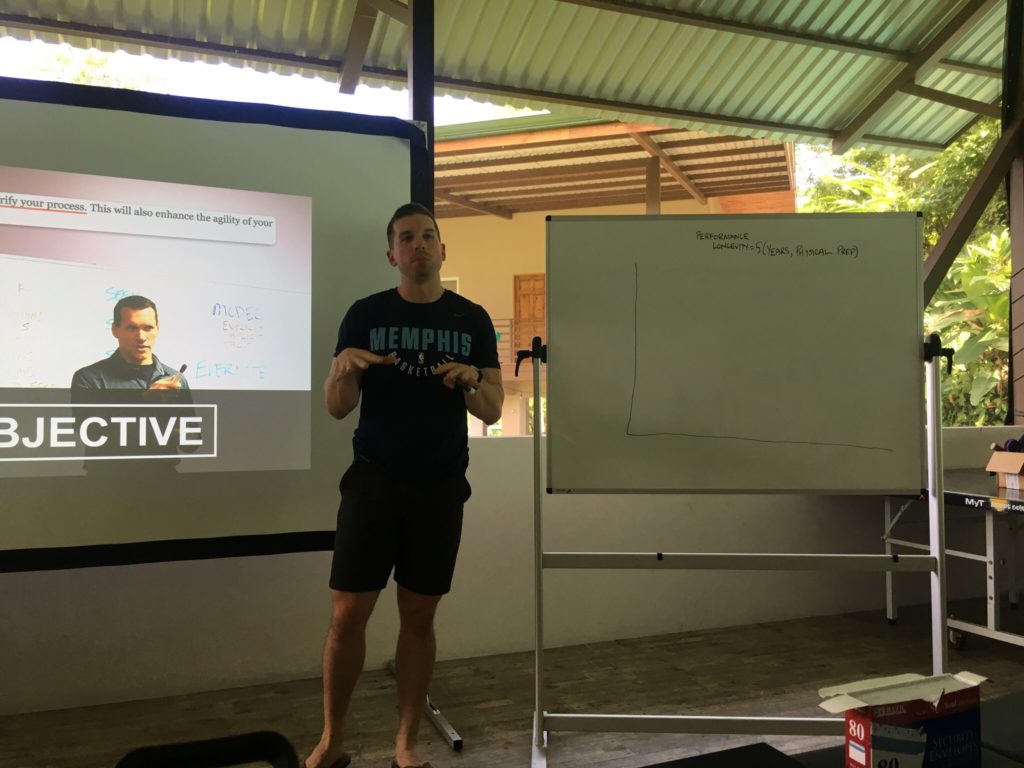
Performance medicine is connecting all the dots necessary to meet a particular goal, and there is simply no better dot connector I know than Eric Oetter.
Winning is the goal in NBA basketball, which requires healthy players. Through performance tactics, Eric’s job involves 1) extending how long a player stays a healthy high performer, and 2) protect against career-ending injuries.
In the NBA, the four worst injuries one can suffer are:
- Stress fracture
- Achilles rupture
- Osteochondral defect
- ACL
Each of these injuries has an incredibly low success rate at return to play.

Though not career-ending, these next four injuries are the most common causes of missed games:
- Ankle sprains
- Patellar tendinopathy
- Low back pain
- Soft tissue injury
There are several ways that a physical prep coach can reduce the odds that these injuries can occur, which can be broken down into load management and moderators, and inflammation management.
Load Management
This part is arguably the most important. No matter how resilient the organism, excessive load will make it break. Thus, the physical prep coach must intelligently manage workload.
Eric’s preferred load management is the acute:chronic workload ratio, which measures immediate workload in relation to long term amounts. This ratio looks at the current week’s total load over the past 4 week’s average. Keeping this ratio between 0.8 and 1.3 reduces the risk of an overload injury occurring.
If you’d like to reduce injury risk by managing workload, enter your name and email below to get a calculator that allows you to do so.
[yikes-mailchimp form=”1″ submit=”Why yes, I’d love to download a free acute:chronic workload calculator”]
Load is measured via external load (work done) and internal load (how the body responds, e.g. RPE or heart rate).
Load Moderators
If a load spike occurs, load moderators can provide an individual better buffering capability against these spikes, like a dimmer switch. If you possess these qualities, resilience to load spikes is likely much higher:
- Biomechanics – Do you mechanically move well
- Functional variance – Does one possess adequate degrees of freedom (I think this is a better definition than what we consider movement variability)
- Bioenergetics – How well energy supply and demand match
- Biodynamics – How well does the neuroendocrineimmune system interact
- Neurodynamic freedom – Can the nervous system excurse effectively

Explain tendons
Tendons are a muscle on one end, ligament on the other. Thus, healthy tendons must exhibit the qualities of both of these tissues; stiff on one end, fluid on the other. If a tendon is too stiff (by cross link buildup), the muscle and tendon can get overloaded.
Reintroducing load ought to start with isometrics. This modality is the slowest way to load the tendon, and effectively breaks crosslinks.
Iso’s are best loaded in the following manner:
- Perform as heavy as tolerable for 5x45s:60s rest
- Achilles tendon – Load at end-range plantarflexion
- Patellar – Load at 30°-40° knee flexion, progressive from a negative to positive shin angle
Diet can also influence tendon stiffness. It has been shown that tendons can stiffen if there is poor glycemic control. Thus, addressing blood sugar can work wonders for tendon health. Supplemental collagen and vitamin C 30-60 min before loading can also improve tendon health. Eric recommends 2g collagen and 60mg Vitamin C.
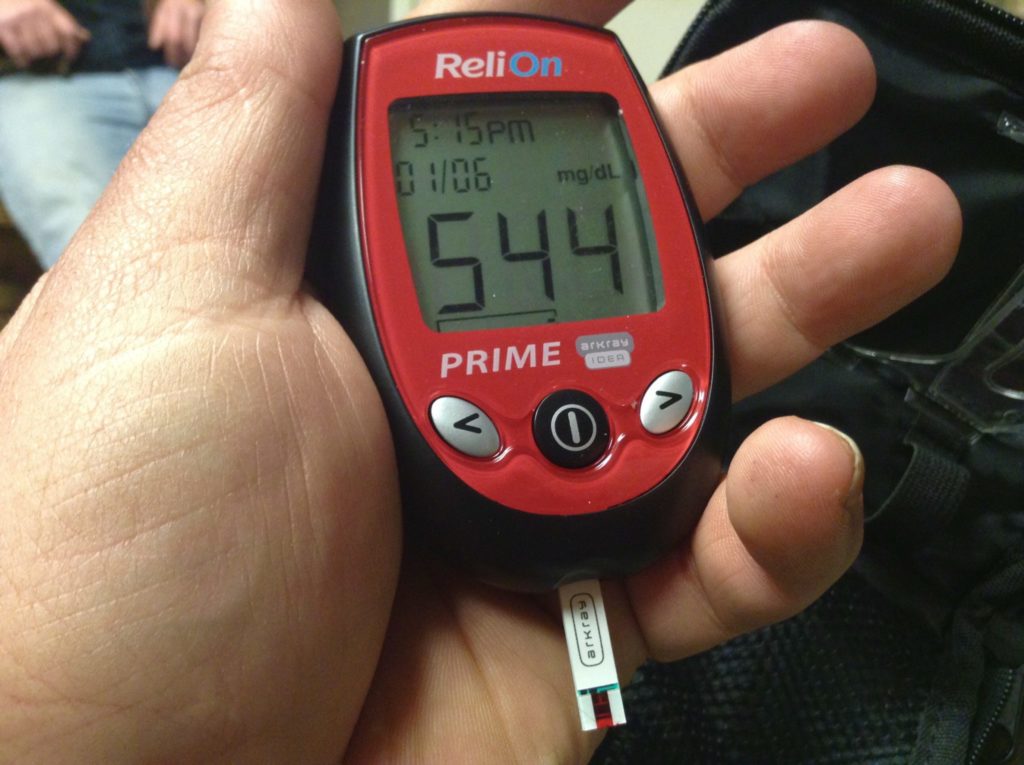
Bioenergetics
Eric dropped some major knowledge bombs about how energy systems really work.
Let’s just say it’s not alactic first 10 seconds, lactic 15-60s, and aerobic minutes. It’s even sooner, much sooner. To the matter of milliseconds.
ATP, the energy molecule, is broken down immediately (i.e. milliseconds) to fuel the cell. This ATP is then refueled by oxidative metabolism.
The mitochondria are the major players here. These cells resynthesize ATP for alactic metabolism, and then pull glycogen out of muscles to fuel glycolysis. It is this glycogen that really provides us all our energy.
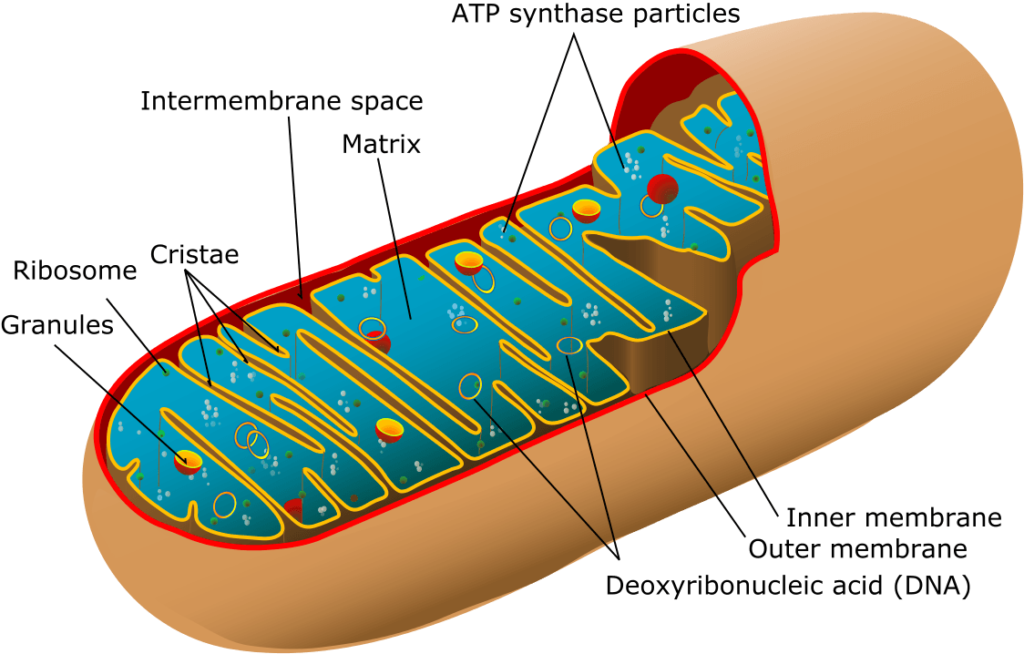
Because the body never runs out of glycogen, mitochondrial volume is most likely the rate limiting step in bioenergetics. Thus, conditioning ought to target these organelles by improving oxygen utilization.
Oxygen utilization can improve by impacting supply and demand. Oxygen supply is improved by training the cardiac and respiratory systems. Oxygen demand can be altered by creating peripheral adaptations that allows tissues to perform with less oxygen.
Most cardiac adaptations (e.g. eccentric left ventricular hypertrophy) can’t occur past age 18, so much of what Eric focuses on with his population is respiratory or peripheral in nature. To determine which area needs to be focused on more, Eric uses a simple equation:
Lean body mass / FEV6
This number needs to be kept under 30. If above 30, one may either need to drop weight or train respiration.
Functional Inflammology
The portion of Eric’s inflammation talk was outstanding. While I can’t do all of the nitty gritty physiology justice, we can still go over the big rocks and treatment options.
The key molecules involved are neutrophils and macrophages. Neutrophils are the immune system’s best cleaner of damaged tissues and inflammatory proteins. Once neutrophils do their job, macrophages within the tissue take the neutrophils into the lymphatic system and life is good. This process is helped by the omega 3 fatty acids EPA and DHA, which provide substrate to this process (another good reason to consume fish).
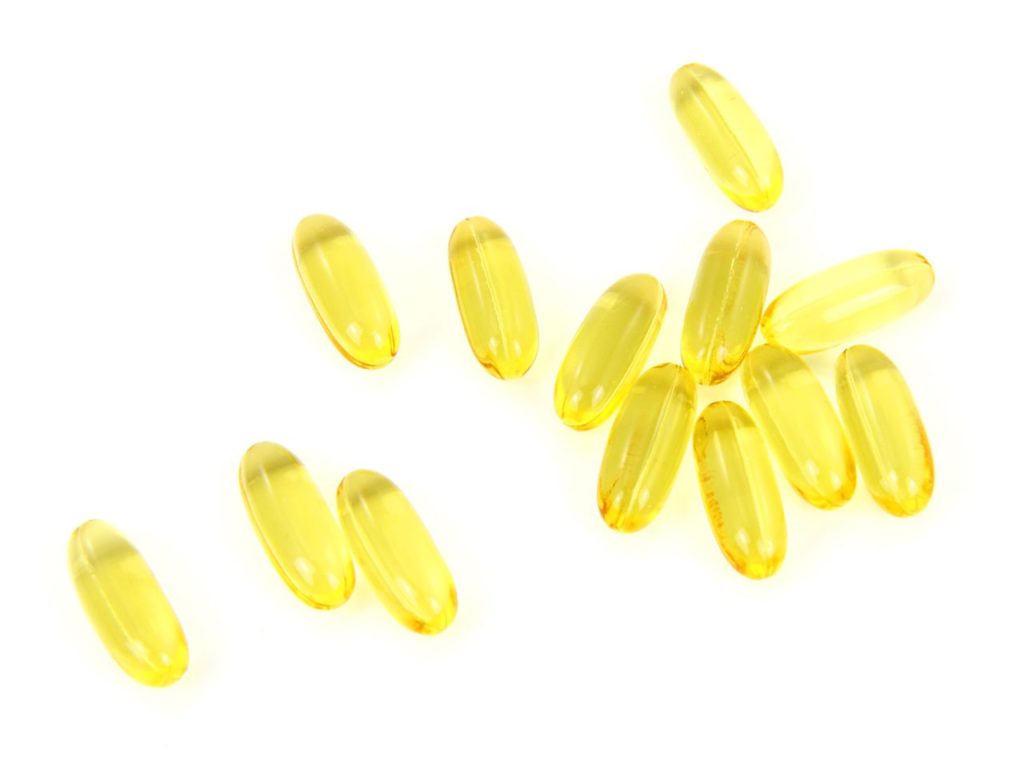
The problem occurs when neutrophils do not get cleared out in a timely manner. When neutrophils stay too long within the damaged area, its contents and ATP spill out, thus propagating inflammation.
Proper distress management can help break this inflammatory cascade. There are four methods in which can improve this area:
- Healthy psychosocial environment
- Sleep
- Immune-boosting activity (e.g. exercise)
- Glycemic regulation
Though Eric doesn’t put out much online content, my hope is someday he shall. You’ll definitely want to be prepared for that moment by checking him out here.
The Need for Stress with James Cerbie
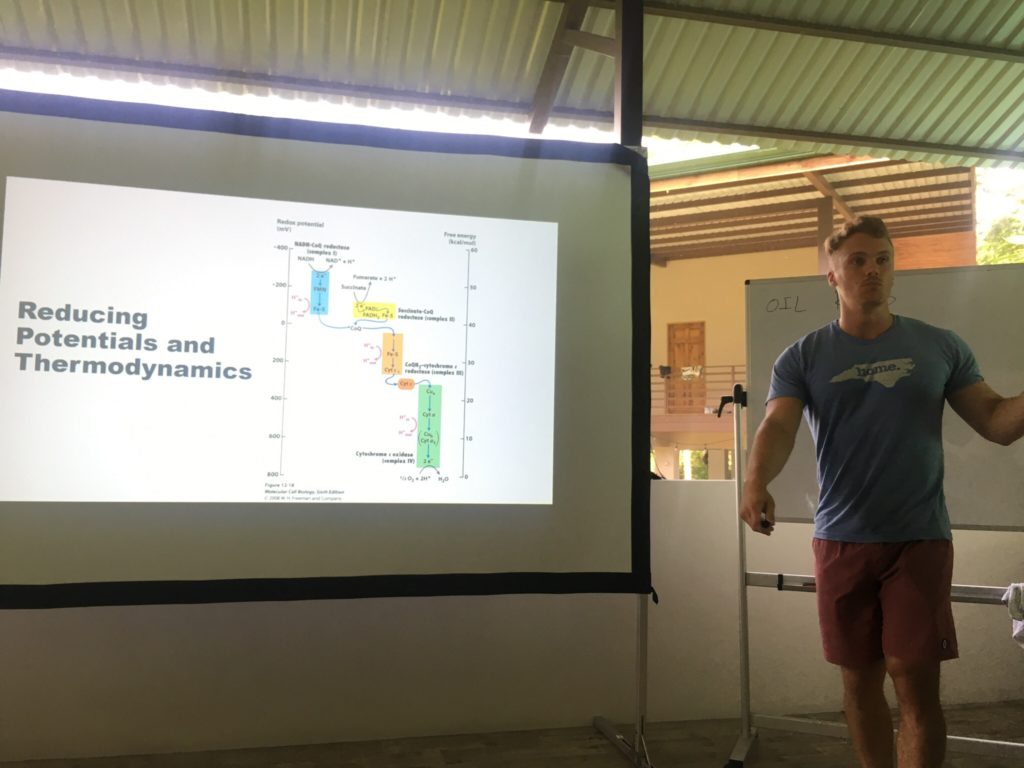
James went into crazy detail on all things mitochondria, and how stress is necessary to improve their health.
Much of this talk piggybacks on Eric’s talk. A particular focus was on the electron transport chain. More specifically, complex 1 and 3.
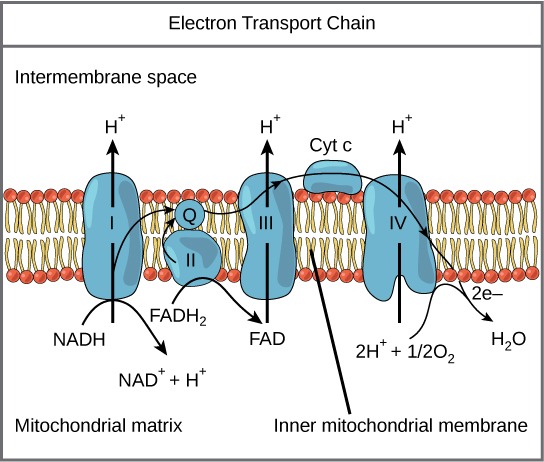
These complexes produce free radicals, which increases with H+ accumulation. These molecules are not bad to produce during training [protip: don’t crush vegetables post-workout. This would limit oxidation, which stimulates mTor production, aka gainzzz], but undesirable to be overproduced at rest. Excessive free radical production at rest can damage proteins, biomembranes, lipids, and DNA.
The extent at which free radicals are produced depends on mitochondrial health. Damaged, but functional mitochondria can produce 10 times more free radicals than healthy mitochondria.
Removing these unhealthy mitochondria, mitophagy, is a major key. In fact, mitophagy must occur before mitochondrial biogenesis (increased mitochondrial size and number) happens.
There are two ways to help stimulate this process:
- Intermittent fasting: 1 day per week on low days
- Exercise: increase daily physical activity, lift heavy things, condition
If you do these things, you ought to be in bidness.
If you want to learn more from James, he puts out a ton of good content here.
Carbs, Stress, and Exercise – Mike T. Nelson
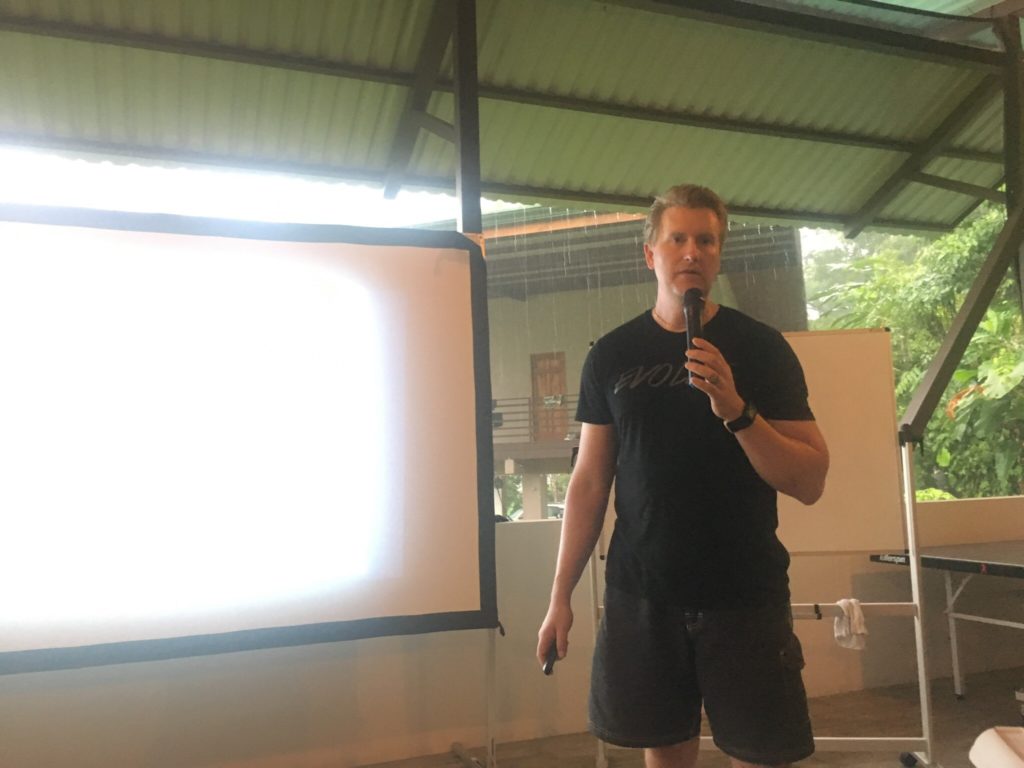
Much of Mike T’s talk focused on metabolic flexibility, which is training the body to utilize carbohydrates at high intensities, fat at low intensities. This state can be achieved by manipulating macronutrients within various stressful states.
Stress
There are two types of stress in which the body occurs, each resulting in different outputs:
The first, distress, takes longer to resolve and return to homeostasis. This leads to adaptations within the body.
Eustress, on the other hand, we recover faster from. This is where performance lies.
Each of these stressors has a place in training. For example, fasted exercise could be considered a distress. Though the body still has muscle glyocogen to draw from, performance will likely be impaired. However, fasted exercise could favorably impact metabolic flexibility by increasing GLUT-4 production, which increases carbohydrate tolerance over the next 24-48 hours.
That said, distress situations should only be used when eustress methods plateau.
Stress macros
Macronutrients ought to be modulated pending on what type of stressor is incurred.
Eustress
- Increase carbohydrates at high intensities
- Increase fats at low intensities
Distress
- Perform high intensities in fasted, low-glycogen states
If you want to learn more from Mike T, check him out here.
Leadership and culture with Kyle Dobbs
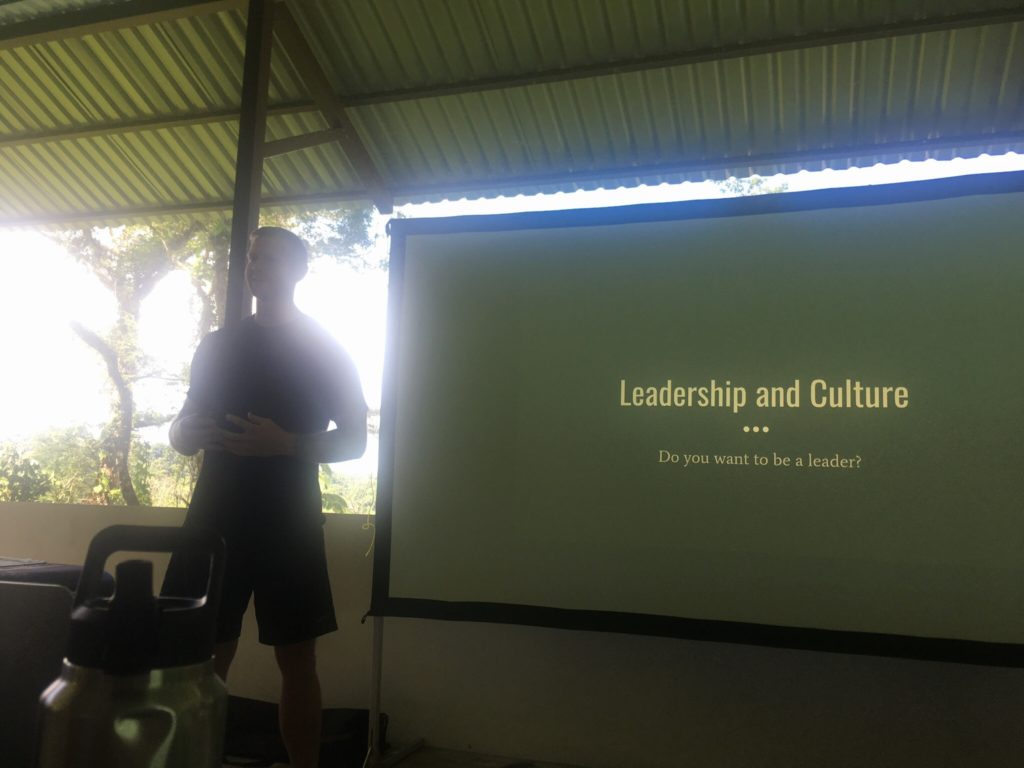
The key to being a leader is taking ownership. If someone doesn’t work, it has to be on the leader.
It also up to a leader to build the culture necessary for success. Culture is how you build a great company. A great tribe.
One of the most important aspects of this process is getting the right people on the team. Not just staff, but clients. Putting this together requires knowing what your ideals are and developing a plan to act these ideals out.
Kyle put together several keys to recruiting good people. Here are the big ones:
- No assholes allowed
- Identify who the leaders are
- Identify what people valute
- Set expectations
If you get people who meet these criteria in your spot, a worthwhile culture can be built.
It’s not a bad thing to hire leaders. You need to be ok with replacing yourself, because these people can allow you to pursue work that can only help you and the company grow.
Sometimes you can get clients who may not fit the culture you are trying to build. Firing these clients is a no-win situation. A win-win situation can be created by referring these clients out to a person they better jive with and replacing them with the type of person that fits your mold.
Accountability vs Ownership
Accountability is externally driven (I’m watching you), whereas ownership is internally driven (hold oneself accountable). The latter is much more desirable. Creating ownership with a staff involves mitigating risk for others. If you create an environment where risk and failure is frowned upon, ownership will not be present.
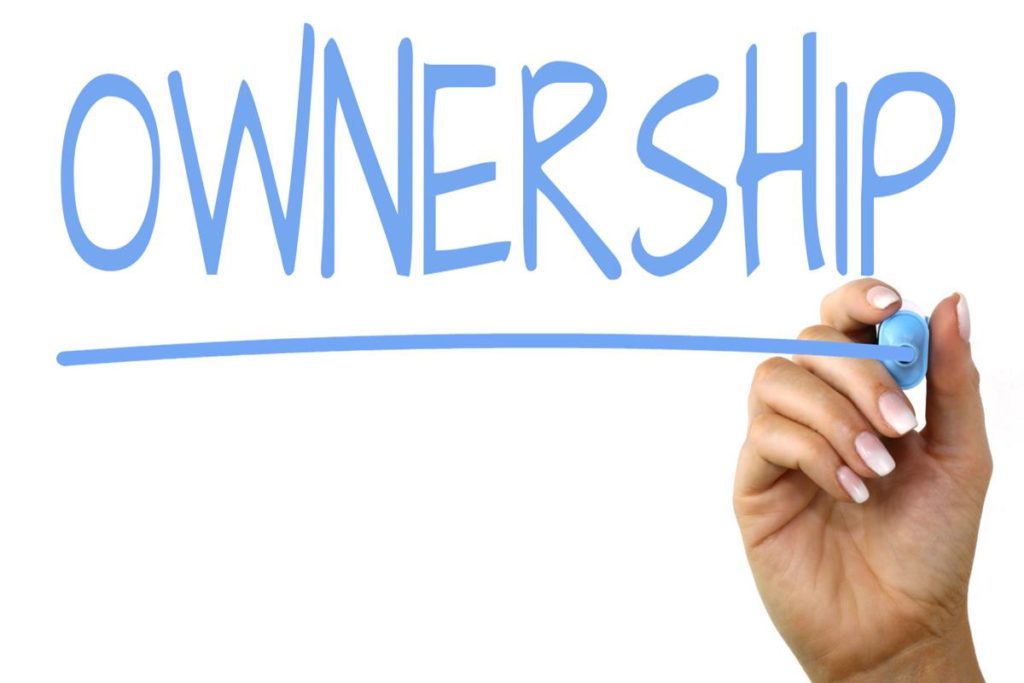
Staff Development
Kyle recommended using a 90-day development plan to onboard new staff. The goal should be to give clients to the best person possible, and a new staff member is not that. Staff should be rewarded for being good, not existing. The 90-day plan serves that purpose.
If you want to listen to his full talk, Kyle guest posted it on Lucy Hendricks’ website. I strongly recommend you give it a listen.
Kyle is also going to be putting his website live soon. To sign up and get notified when that happens, check him out here.
Muscle hypertrophy by Ryan L’Ecuyer
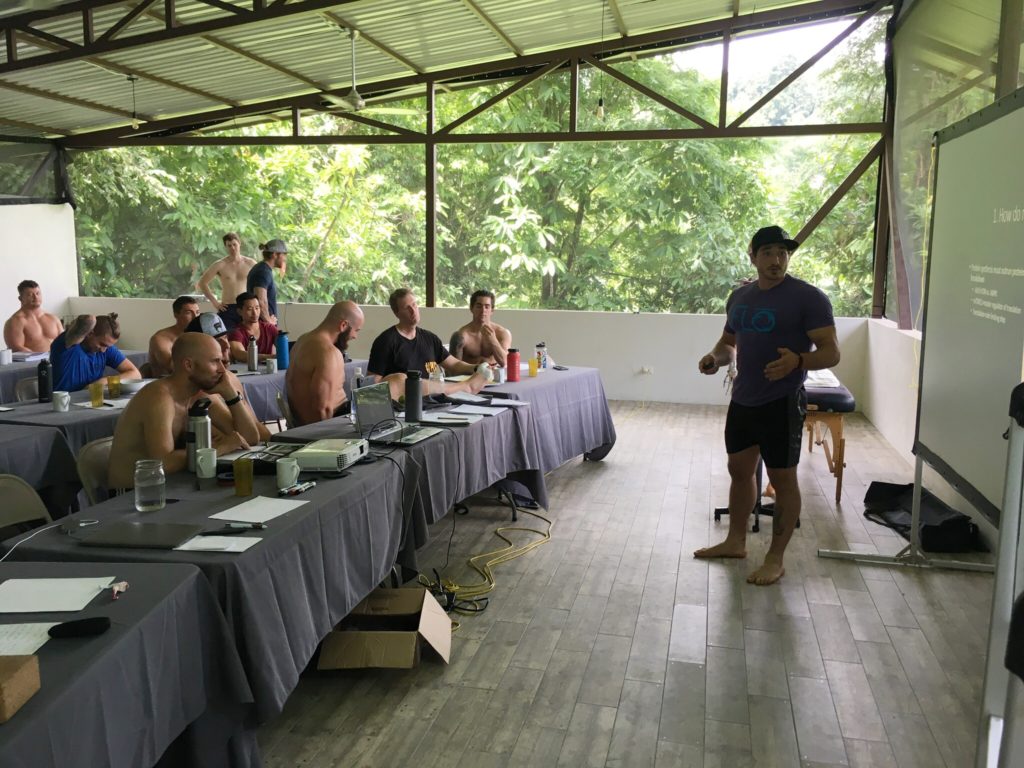
Ryan is a successful natural bodybuilder and taught us all things hypertrophy.
Quality volume is the number one predictor of muscular hypertrophy. Here are Ryan’s recommendations:
- 12-18 hard sets per week per muscle group
- Stick in the 8-12 rep range
- RPE greater than or equal to 8.
- Rest 1-2 minutes in the beginning, as loads increase throughout the block, up the rest intervals
Beginners should focus on slow tempos to improve movement skill. Once you can perform quality movement consistently and at high volumes, up the ante by training towards failure, especially on accessory movements. Excess muscle is inefficient and unnecessary, so you need to go hard as all hell to signal your body that you need it.
Bloodflow restriction training (BFR) is also another useful method, especially in cases of injury, decreased respiratory fitness, high CNS fatiguing protocols, or simple laziness. This method facilitates muscle growth by the metabolic stress incurred from cell swelling, H+ and lactate accumulation.
Heavy load aren’t necessary for hypertrophic goals. Though they lead to high recruitment, heavy loads are not fatiguing, and lead to less volume overall.
If you want to learn more from Ryan, check him out here on social.
Sum Up
It was an incredibly dense learning retreat, and if you ever get the chance to hit up Ben’s programs, do so yesterday.
To summarize:
- Master movement archetypes
- Movement can help someone who has experienced trauma feel safe
- Conditioning involves seeking cardiac, respiratory, and peripheral adaptations
- Load management and moderating is key to reducing injury risk
- Keep your mitochondria healthy by exercising and periodically fasting
- Utilize macronutrients to either aid in performance or adaptation
- Instilling ownership is key to building a culture of any kind
- If you want gainzzz, you want volume
What was your favorite learning nugget? Comment below and let us know.

